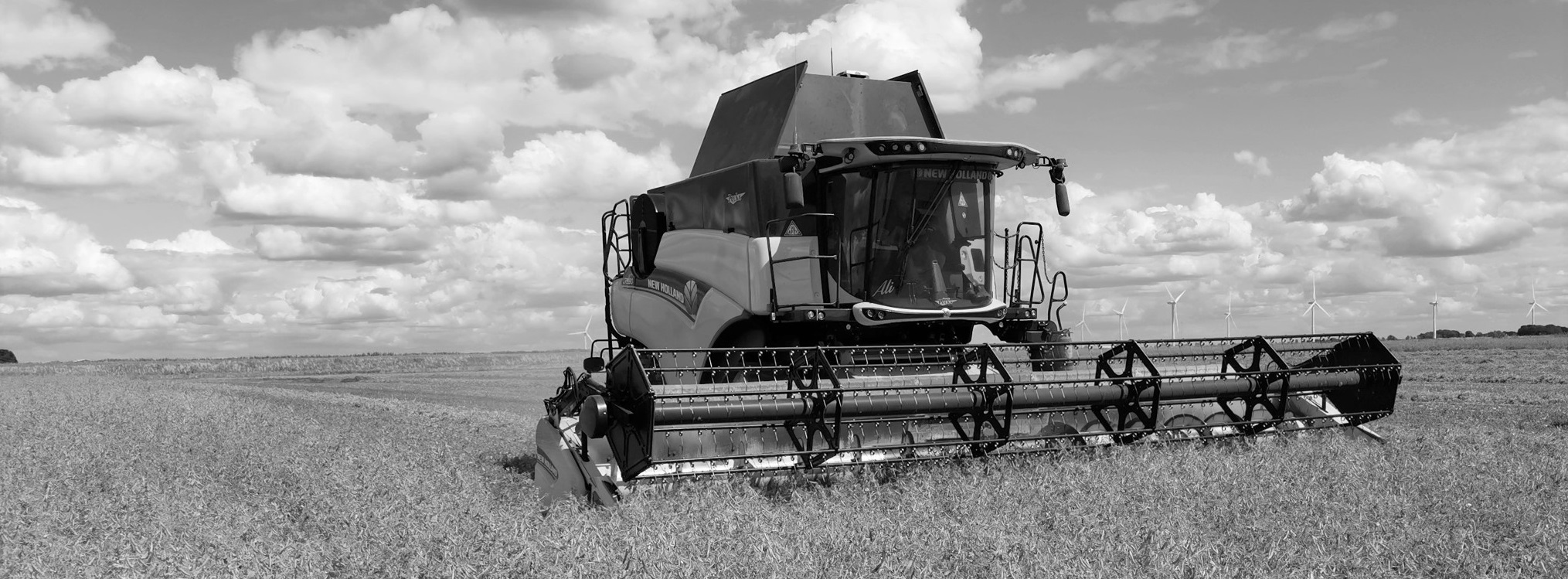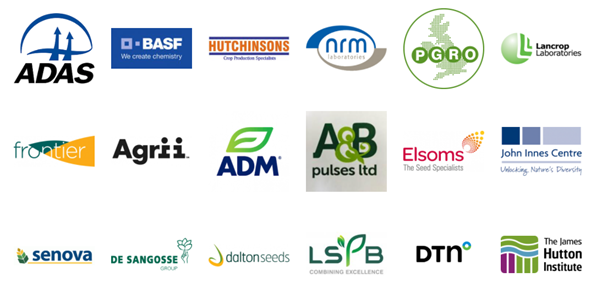
Background
2021 marked the third year of the Pea Yield Enhancement Network (Pea YEN) as part of the wider YEN family format and it’s sixth year in total. The Pea YEN aims to understand yield variation in combining peas by sharing knowledge of real-world crops within a network of growers, industrial sponsors and researchers. Understanding why yield varies between farms aims to bring us closer to unlocking how obstacles to achieving the potential yield of the crop can be overcome. The Pea YEN has been key in developing a YEN platform for pulses and continues in it’s aim to support combining pea growers and the industry as a whole.
The Pea YEN process to date
The Pea YEN was set up in 2016 in partnership with PGRO and with the support of industry sponsors. The Pea YEN has benefitted from several years of development with industry partners and a specialist independent pea agronomist to understand which measurements are important for studying pulse crops as well as the best way to collect this information. In 2019, the Pea YEN was expanded and the project structure adapted to the system of the wider YEN family in order to include as many pea growers as possible and to allow any farmer, agronomist or researcher to enter their pea crop for benchmarking. The aim is to compare the crop entered with all others within the season in terms of nutrition, quality, crop development and growth, so to understand how these factors relate to final yields and the agronomy decisions made. The biophysical yield potential for each crop is estimated from the light and water resources available during the season at each site.
ADAS carries out analysis of crop physiology, and partner labs analyse leaf and seed nutrition (Lancrop), seed quality (Askew and Barret Ltd) and in 2021 soil nutrition and soil rhizobium populations (Hutton Soils Ltd). All metrics are benchmarked against anonymized data from the whole network in an annual ‘harvest report’ to allow entrants to understand peculiarities of their own crops.
ADAS & PGRO also undertake and report a combined analysis of all the data, to help understand what aspects of the crop or its agronomy are associated with yield, so that growers can appreciate how to enhance their own yields and new research strategies can be developed.
Results
2021 was the Pea YEN’s largest year to date and achieved the highest number of entries per area of crop grown in the UK of the YEN family, with 27 registered entries. 21 of these entries were able to return yield and site information to allow ADAS to calculate a potential yield. Yield ranged from 1.5 to 5.3 t/ha, representing 20 to 69 % of estimated biophysical yield potential for each site. Following a virtual event in 2020, the Pea YEN was pleased to host an in-person winter results meeting at PGRO in November 2021.
The meeting included a review of the season, a session on benchmark interpretation and a review of the messages arising from the analysis of the Pea YEN data set encompassing all available data to date. With continued support from entrants and sponsors, the Pea YEN data set encompasses 58 yields since 2019, and particular focus was placed on using this increased amount of data to separate out the impacts of generally lower yielding, but higher value, marrowfats from other variety types when investigating associations of crop information with final yield.
Whilst this analysis cannot disentangle cause and effect (i.e we cannot say what is ultimately driving changes in yield) it has been combined with expert judgement from the Pea YEN Team to pull out useful take-home messages. These messages can be combined with information from the benchmarking reports to give value to each YEN member by seeing their own measurements in context, and so being able to judge how to seek enhancements. Some take home messages from Pea YEN include:
Site, soil and nutrition
- Soils with higher P indices tended to yield higher. Although not statistically significant, sulphur inputs tended to be higher in higher yielding crops – Highlighting the importance of adequate P and S
Crop development
- Although not statistically significant, higher yielding crops tend to be sown earlier and have more time between sowing and nodulation (GS34). - Duration of growth stages may be important in determining final yields
Agronomy inputs
- Higher yields were associated with herbicide applications – Suggests that good weed control is important for attaining high yields
Yield components
- Non marrowfat variety type yields were associated with plant population – Plant population is important in determining final yield of combining peas. Within the pea YEN data set, marrowfat plant populations are similar to the defined economic optimum.
- Across all pea variety types, higher yields associated with: seeds/m2, whilst the pods/shoot and HI remain stable – Pea yields within the YEN appear to be ‘sink limited’, meaning that the ability to set seed numbers is likely to be a factor limiting yields. Across Pea YEN crops, this may be linked to targeting optimum plant populations rather than achieving larger, more well podded individual plants.
- In marrowfats, the lower levels of staining are associated with higher yields – suggests that standing at harvest and ease of harvest is important.
The value of these messages is strengthened with each entrant's involvement; by being part of the YEN community, growers can help to improve everyone's understanding as well as their own. An open discussion reflecting on the results and what the group saw as barriers to maximizing yield and how we can continue to develop the Pea YEN followed. Topics discussed included:
- The benefits (potentially establishing a crop that will avoid stress at critical periods such as flowering) and costs (availability of good seedbed conditions for establishment) and whether improvements to soil health and soil structure could increase the likeliness of crops being able to establish early.
- The interpretation of leaf tissue analysis results and the effect of remedial action (such as manganese applications for marsh spot) on results.
- The economics of seed rates in peas and whether carrying out on farm germination tests could allow more precise targeting of plant populations. The impact of the mechanical handling of pea seed on germination success was also discussed.
- The impact of cover crops on peas
- Ideas to improve the data collected in the YEN including; the importance and measurement of harvest losses for peas, considering plants per m of row, soil compaction & VESS, and independent measures of biomass via quadrats at flowering.
The Pea YEN in 2022 and beyond
The Pea YEN 2022 is open for registration and continues with the aim to maximise the number of crops measured within the network, so as to help more growers and provide increasingly robust insights into factors associated with yields. Accumulating YEN data will provide increasingly reliable values of crop characteristics (e.g such as nutrient status or plant height) commensurate with high or low yielding crops.
The Pea YEN also aims to refine and simplify the information sought from growers and to develop a more sophisticated model of yield potential to aid the more precise benchmarking of crops.
Becoming a part of the Pea YEN and the Bean YEN in 2022
Both YENs are open for all, and we encourage experienced and new pulse growers to join the network. For more details click here.
For sponsors interested in supporting please get in touch at peayen@adas.co.uk
2021 sponsors
A huge thank you goes to those who have supported the Pea YEN in 2021, without sponsor support the YENs would not be possible.

